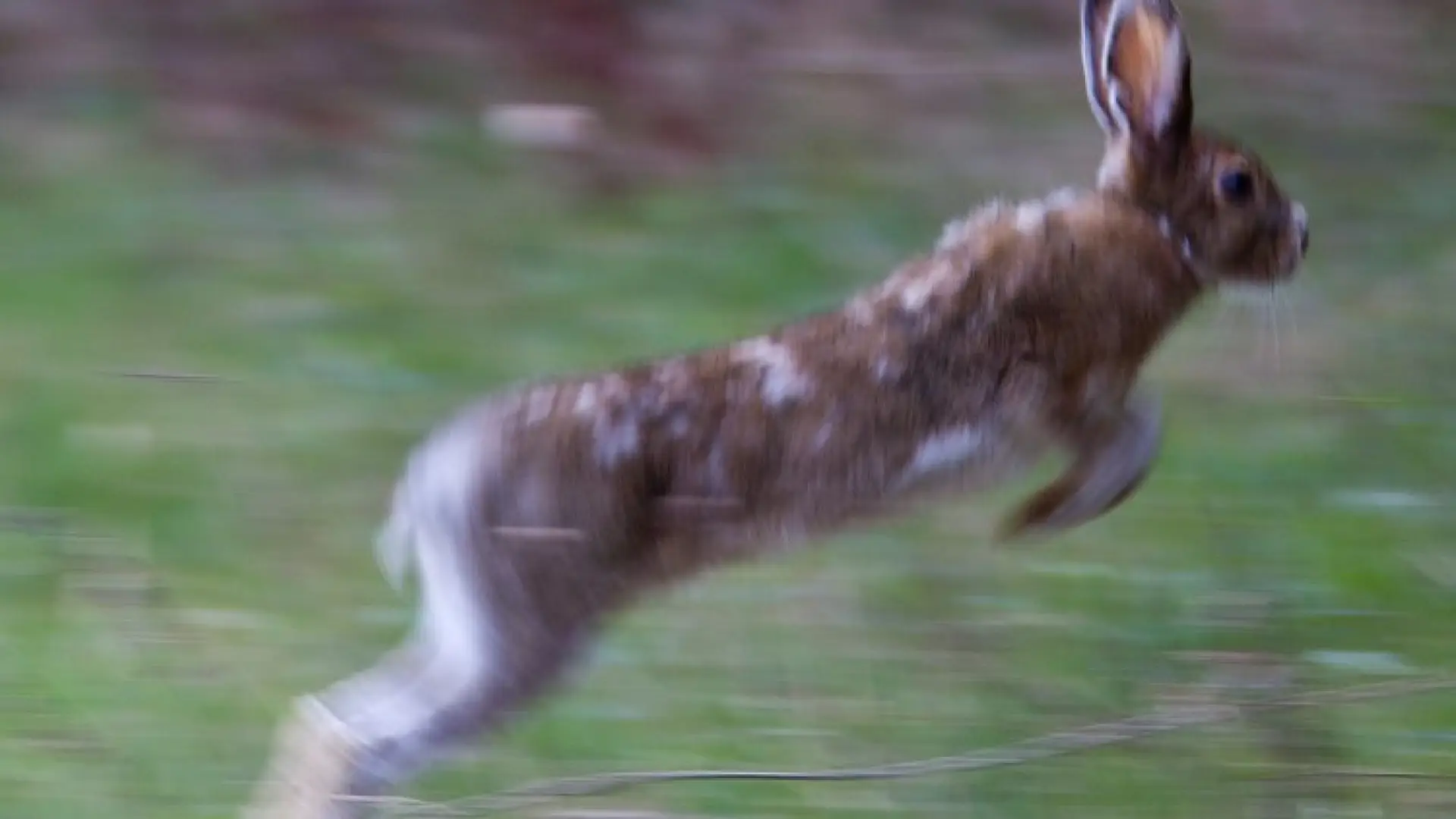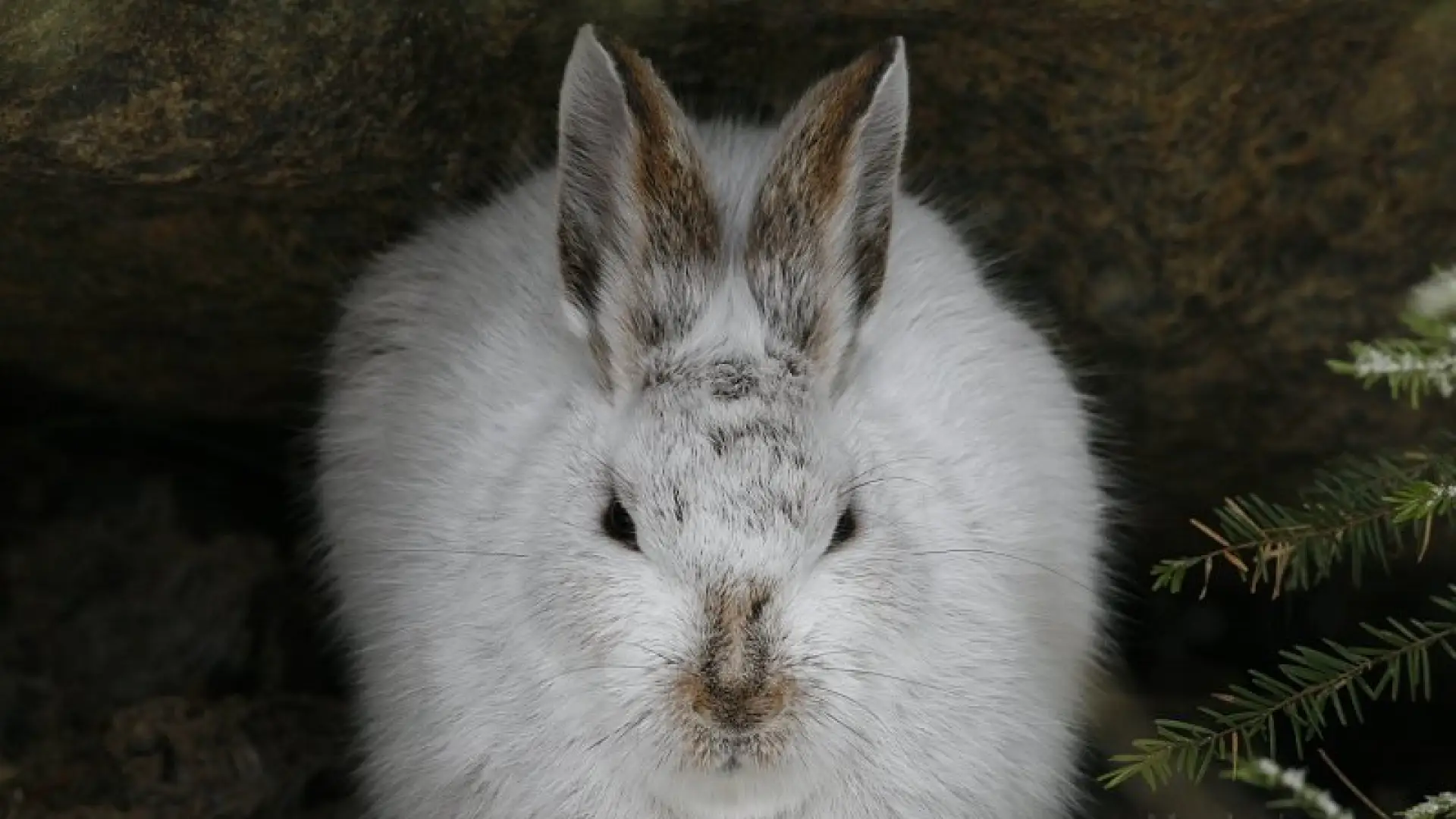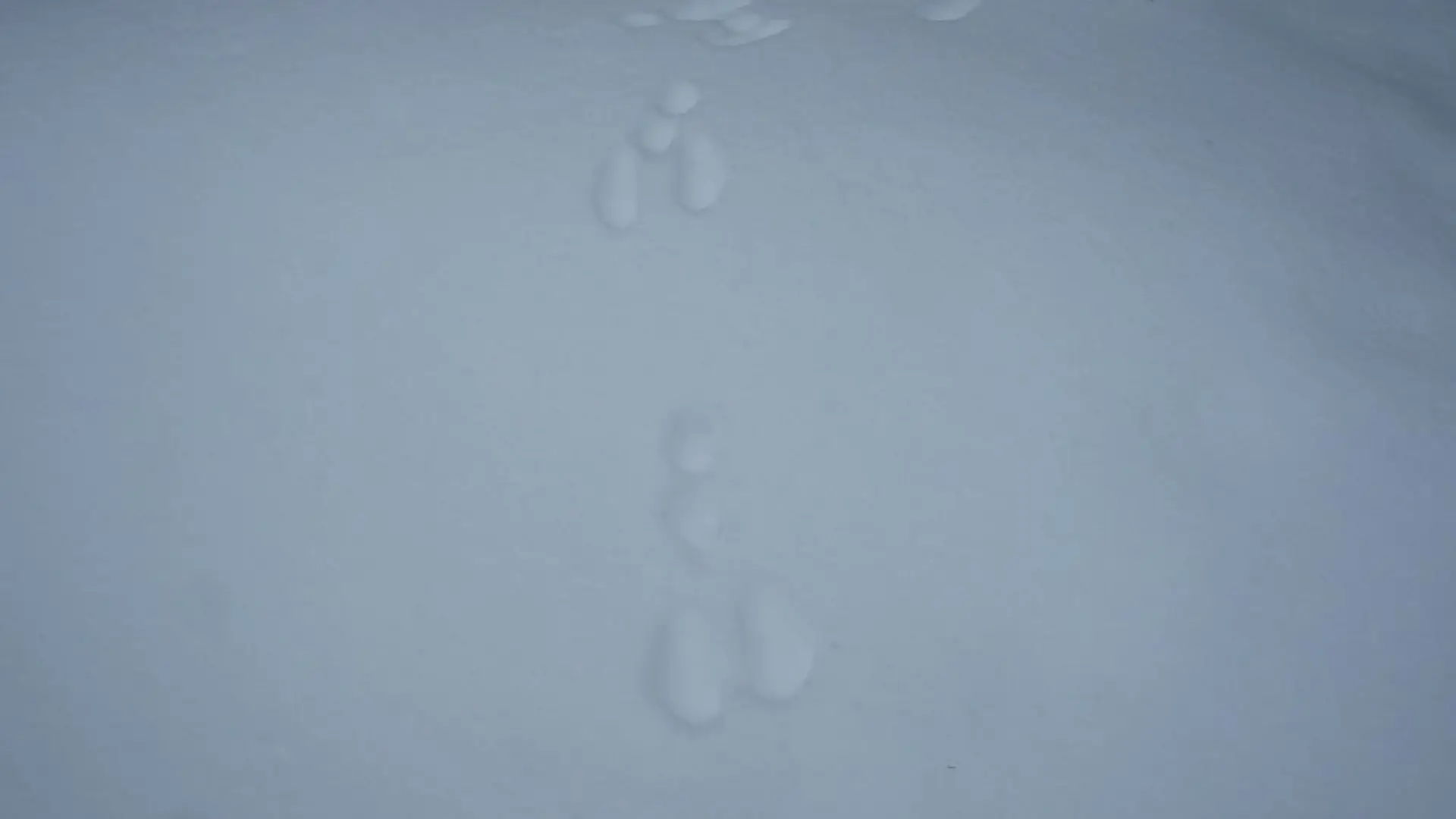The Elusive Adirondack Relative of the Easter Bunny

As the Easter Bunny is planning his visit with colored eggs and candy, it seemed appropriate to discuss our local relation of rabbits, the snowshoe hare. If Peter Cottontail is real (and if there are kids out there reading this, I'm not saying he's not), he and snowshoe hares would be classified in the same family, but in a different genus from each other. Snowshoes are a small hare and not much larger than cottontails, and the eastern cottontail is found in parts of our region as well. But despite the familiarity many folks have with cottontails, snowshoe hares are our most common lagomorph (pikas, hares, and rabbits), and they are widespread throughout the region.
Snowshoes are well known for the seasonal changes in their fur coat – molting from brown in summer (with a paler belly) to a white coat in the winter. The result of this change is amazing year round camouflage, and snowshoe hares are seldom seen as a result – especially when you consider how prevalent they are in the area.
For instance, I'm outside hiking, birding, skiing, or snowshoeing pretty much every day, and I rarely encounter them. I also tend to have more luck seeing them in their summer brown coat, perhaps because they are more active at that time of year, or because the young of the year are less wary. Spotting one in its winter white finery can be a real treat. There is also a black color morph in the Adirondacks that is quite rare.

Even though hares are difficult to find, what you do commonly see when out in the woods are signs of hares. Usually this consists of their tracks, and if you follow a set of tracks, you can often find small pellets of scat (not to be confused with the Cadbury Creme Eggs I've seen some rabbits lay on television). It is in the winter that their tracks are most visible, displaying how common this surreptitious denizen of the brush and balsam undergrowth is.
It is also in the winter that their large back feet – from which the snowshoe hare earns its name – are most advantageous. Hares move agilely across the surface of deep snow, sometimes leaving only a trace set of tracks in the topmost layer. And while they may become less active when the snow is exceptionally soft, their ability to move across the snow surface is impressive and is important in evading predators – using their prodigious bounds (3-6 feet when pressed) to do so. Such abilities are important since hares are hunted by a long list of animals in the area including coyotes, foxes, fishers, bobcats, and some predatory birds. Further north in their range, hares are preyed upon by Canada lynx, a species which relies heavily on the hares to survive. Hare populations tend to fluctuate on a ten year cycle and lynx populations generally follow a ten year cycle too – likely because of this close linkage.

The hare cycles themselves are most likely tied to cycles in vegetation and available food, and hares eat a variety of plant material. In summer they eat grass, berries, and green shoots and vegetation, while in winter they must subsist on twigs and bark. Hares also eat carrion – a slight twist to the general perception of cute fluffy bunnies – but it may represent an important adaptation for proper nutrition. This may be particularly important in winter when frozen meat is available and plant matter is hard to find. Hares, like rabbits, also produce two types of feces – soft and hard pellets. The soft pellets contain a variety of nutrients, and they are ingested to extract them. And while you may not want to tell you kids that the Easter Bunny eats his poop, perhaps you can think of the pellets as nutritious, all-natural jelly beans without artificial flavoring or food coloring.
Odd eating habits aside, hares are an important part of the ecosystems of the Adirondacks. After all, many species rely on them as a prey item. Look for them and their tracks in a variety of Adirondack habitats, but they are most common in brushy areas, especially in stands of spruce and balsam. And while they can be difficult to spot, they can be easier to find in the spring when they are chasing after rivals (the males can engage in serious battles) and mates. So perhaps after finding your Easter eggs this weekend you can take a hike or a ski to search for a more elusive quarry and find the North Country's relation to the Easter Bunny.